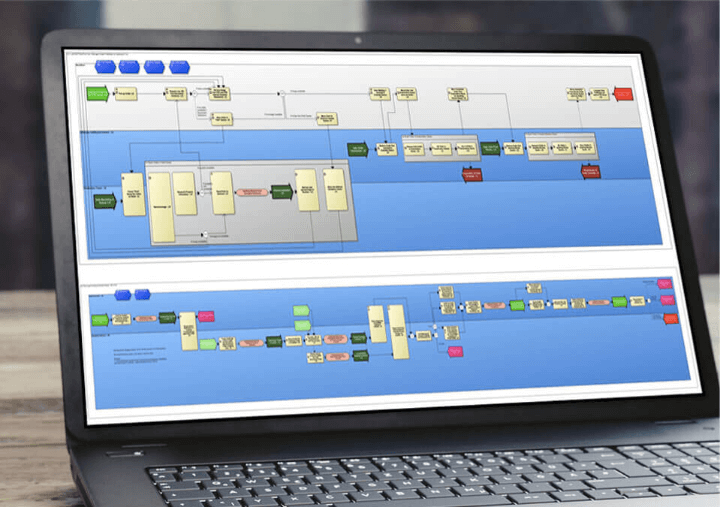Getting started with business process modeling is better done sooner rather than later. Especially since business processes modeling is essential to a data strategy.
In this series on business process modeling, we already looked at what business process modeling is. This week, we look at determining when tostart business process modeling. If you’re not caught up on the series, we cover the ‘Basics of Business Process Modeling’, here.
Getting started with business process modeling: Why am I doing this?
When deciding to undertake business process modeling to understand how your company operates, the biggest question you need to ask yourself is ‘why am I doing this?’
Examining your aims and objectives as a result of undertaking business process modeling, will determine the right time to employ business process modeling. Additionally, you’ll be able to determine if it will yield the results you want. It can also change the way you approach business process modeling itself.
“If you’re interested in business process modeling just to map your processes, that’s pretty simple,” explains erwin business process modeling consultant, Marios Forsos. “But if want to do it to analyze your risk and governance, then your business process modeling approach should be different. The fundamental question an organization needs to ask is ‘why?’ What is the ultimate goal?
Getting started with business process modeling: When is the right time?
Getting started with business process modeling requires that a number of processes are already in place. Then you can then use business process modeling to look for inefficiencies and make improvements.
Marios says that the companies IT maturity will determine when to begin business process modeling. “The more IT-based a company becomes, the more mature they are, the more ready they are to actually start a business process modeling project.
“Additionally, it is also about the time when they ask ‘what’s costing me more money at the moment?’
“The answer to that question can help you identify where change will bring the biggest benefit to the business’s bottom line. In some companies, data management is inefficient and expensive.
Some companies can save money by upgrading or changing their hardware, or moving from on-premise applications to the cloud. Often in corporations, the plethora of business processes and bureaucracy can be rationalized with a new business process model.”
What benefits will business process modeling bring?
Unlocking knowledge and then putting systems in place to retain that knowledge is one key benefit of business process modeling. This is because knowledge retention and training has become a pivotal area in which businesses will either succeed or fail.
“The biggest reason companies should apply business process modeling is “to get everybody in the organization using the same language, to refer to things in the same way,” notes Jon Sweigart, head of erwin’s professional services team.“This is becoming more critical as companies tend to grow through mergers and acquisitions.”
Drawing out this knowledge then allows a centralized and uniform process to be adopted across the company. In any department within any company, individuals and teams develop processes for doing things. Business process modeling extracts all these pieces of information from individuals and teams so they can be turned into centrally adopted processes.
This, in turn, can then help ensure regulatory compliance since everyone will be doing the same thing.
In our next article on business process modeling, we will look at the best first steps to take to begin this discipline within your own company.
We’ll update our followers on Twitter, and Linkedin when our next business process modeling post arrives.

